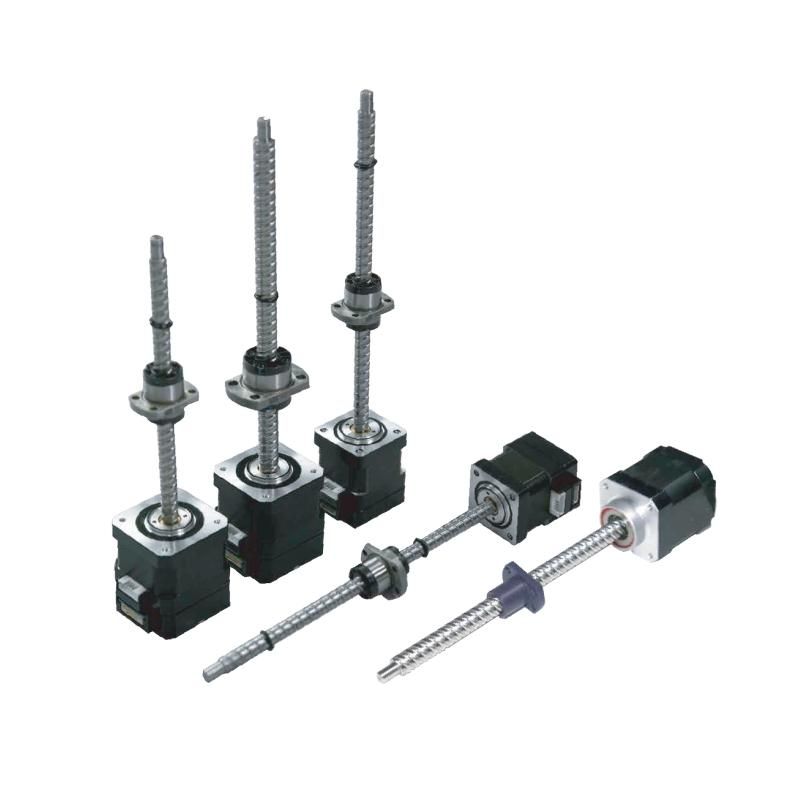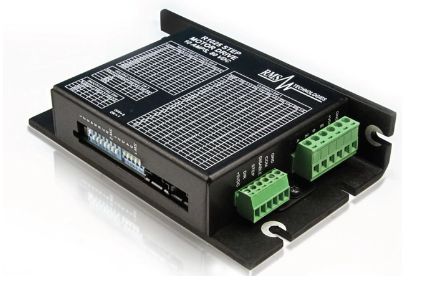It is well known in the engineering field that mechanical tolerances have a major effect on precision and accuracy for every type of device imaginable regardless of its use. This fact is also true of stepper motors. For example, a standard built stepper motor has a tolerance level of about ±5 percent error per step. These are non-accumulative errors by the way. Most stepper motors move 1.8 degrees per step, which results in a potential error range of 0.18 degrees, even though we’re talking about 200 steps per rotation (see Figure 1).
2-Phase Stepper Motors - GSSD Series
Miniature Stepping for Accuracy
With a standard, non-cumulative, accuracy of ±5 percent, the first and most logical way to increase accuracy is to micro step the motor. Micro stepping is a method of controlling stepper motors that achieves not only a higher resolution but smoother motion at low speeds, which can be a big benefit in some applications.
Let’s start with our 1.8-degree step angle. This step angle means that as the motor slows each step becomes a larger portion of the whole. At slower and slower speeds, the relatively large step size causes cogging in the motor. One way to alleviate this decreased smoothness of operation at slow speeds is to reduce the size of each motor step. This is where micro stepping becomes an important alternative.
Micro stepping is achieved by using pulse-width modulated (PWM) to control the current to the motor windings. What happens is that the motor driver delivers two voltage sine waves to the motor windings, each of which is 90 degrees out of phase with the other. So, while current increases in one winding, it decreases in the other winding to produce a gradual transfer of current, which results in smoother motion and more consistent torque production than one will get from a standard full step (or even common half step) control (see Figure 2).
single-axis stepper motor controller +driver operates
When deciding on an increase in accuracy based on micro stepping control, engineers have to consider how this affects the rest of the motor characteristics. While the smoothness of torque delivery, low-speed motion, and resonance might be improved using micro stepping, typical limitations in control and motor design prevent them from reaching their ideal overall characteristics. Due to the operation of a stepper motor, micro stepping drives can only approximate a true sine wave. This means that some torque ripple, resonance, and noise will remain in the system even though each of these is greatly reduced in a micro stepping operation.
Mechanical Accuracy
Another mechanical adjustment to gain accuracy in your stepper motor is to use a smaller inertia load. If the motor is attached to a large inertia when it tries to stop, the load will cause some slight over-rotation. Because this is often a small error, the motor controller can be used to correct it.
Finally, we turn back to the controller. This method may take some engineering effort. In order to improve accuracy, you may want to use a controller that is specifically optimized for the motor you have chosen to use. This is a very precise method to incorporate. The better the controller’s ability to manipulate the motor current precisely, the more accuracy you can get from the stepper motor you are using. This is because the controller regulates exactly how much current the motor windings receive to initiate the stepping motion.
Precision in motion systems is a common requirement depending on the application. Understanding how the stepper system works together to create precision allows an engineer to take advantage of the technologies that are available, including those used in the creation of the mechanical components of each motor.
Post time: Oct-19-2023








